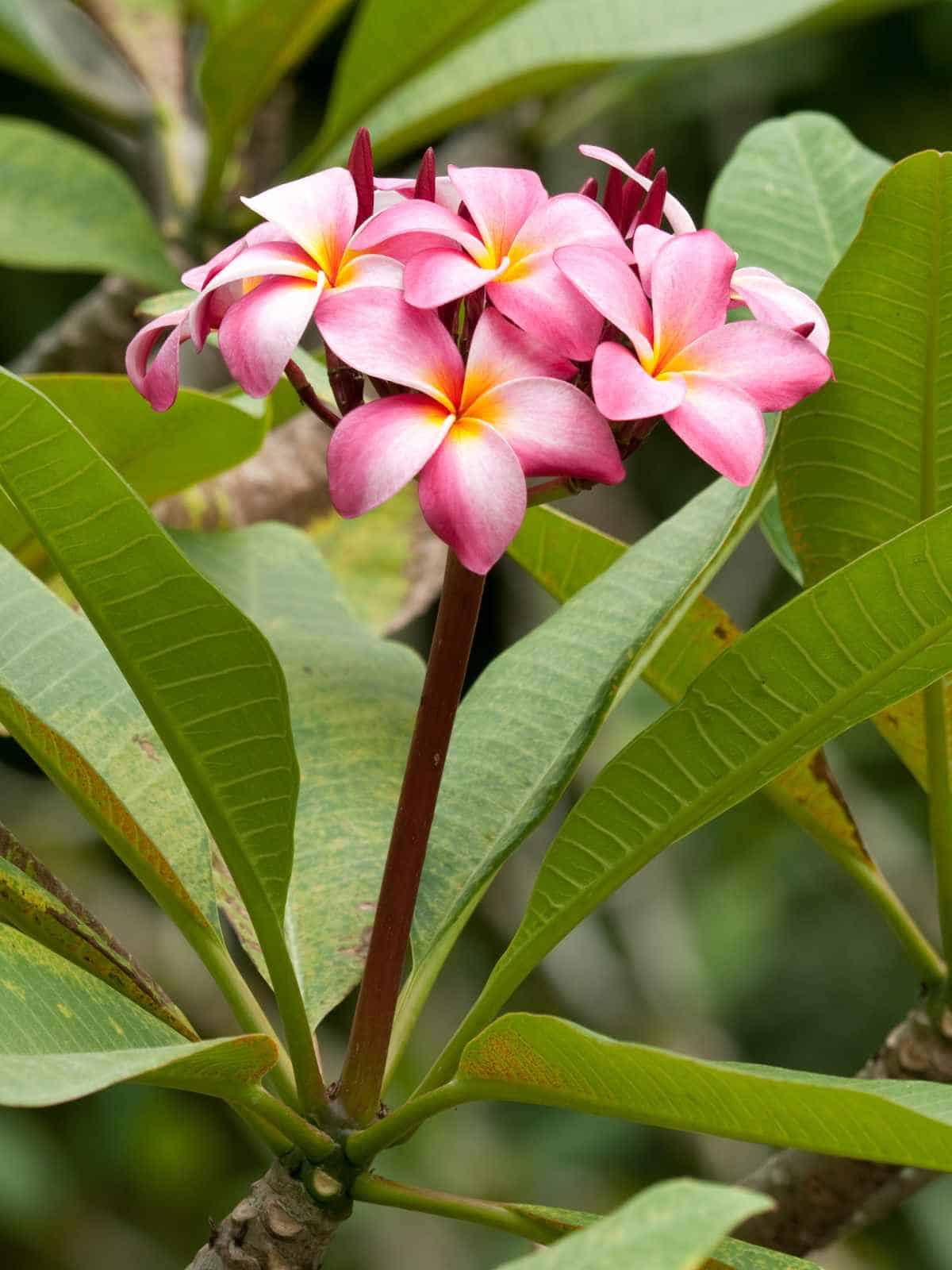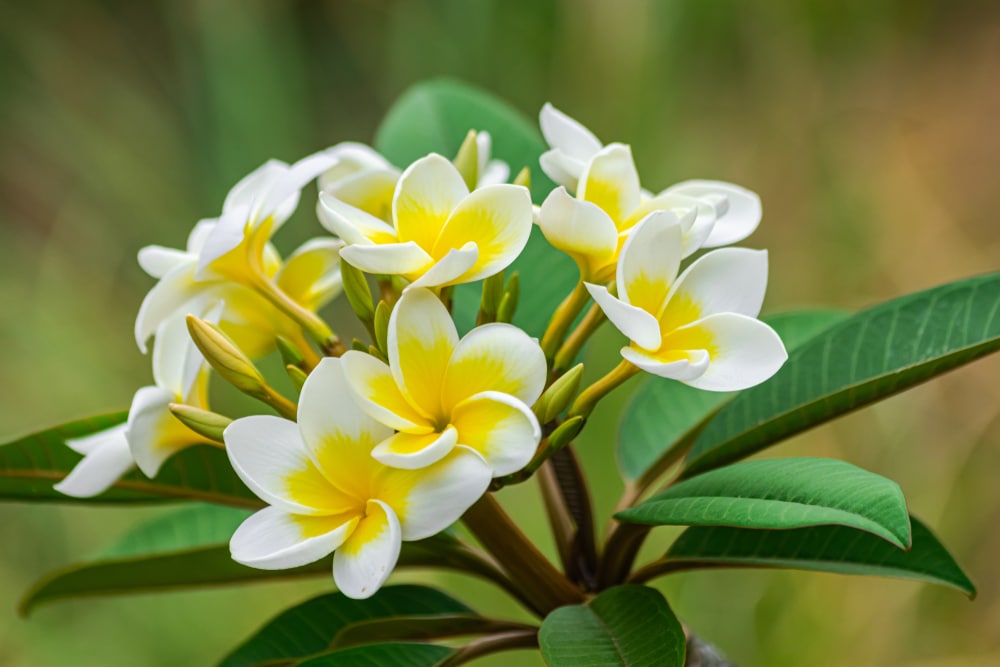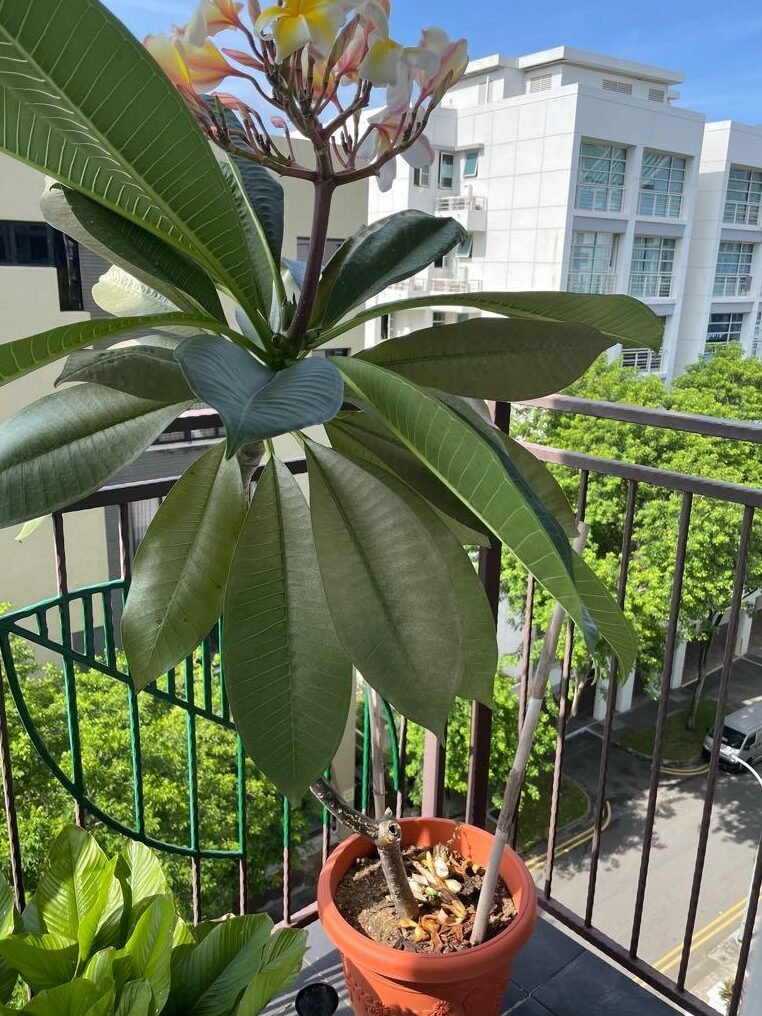Understanding Plumeria’s Winter Needs
As the winter months approach, plumeria enthusiasts often wonder how to care for their beloved plants during this time. Providing proper care for plumeria during the winter is crucial to ensure the plant’s survival and promote healthy growth. Cold temperatures and reduced daylight can significantly impact plumeria’s growth and blooming cycle, making it essential to understand the plant’s specific needs during this period.
Plumeria, also known as frangipani, is a tropical plant that thrives in warm and humid environments. During the winter, the plant’s growth slows down, and it may drop its leaves. However, with proper care, plumeria can continue to bloom and thrive even in the cold winter months. To achieve this, it’s essential to provide the plant with the right conditions, including adequate light, temperature, and humidity.
One of the primary concerns for plumeria during the winter is the lack of light. Plumeria requires bright, indirect light to photosynthesize and produce energy. During the winter, the days are shorter, and the sun is lower in the sky, resulting in reduced light intensity. To combat this, plumeria enthusiasts can use grow lights to supplement the natural light and provide the plant with the necessary energy to thrive.
In addition to light, temperature is another critical factor to consider when caring for plumeria during the winter. Plumeria prefers temperatures between 65°F to 90°F (18°C to 32°C), making it essential to keep the plant away from cold drafts and frost. Bringing the plant indoors or using a greenhouse can help maintain a consistent temperature and provide the necessary protection from the cold.
By understanding plumeria’s winter needs, enthusiasts can take the necessary steps to provide the plant with the right conditions to thrive. This includes adjusting the light, temperature, and humidity levels to simulate a tropical environment, even in the cold winter months. With proper care and attention, plumeria can continue to bloom and provide beauty and fragrance to any space.
Preparing Your Plumeria for Winter: Pruning and Protection
As the winter months approach, it’s essential to prepare your plumeria for the cold weather ahead. One of the most critical steps in winterizing your plumeria is pruning. Pruning helps maintain the plant’s shape, promotes healthy growth, and encourages blooming. When pruning your plumeria, remove any dead or damaged branches, and cut back the tips of the stems to encourage new growth.
Another crucial step in preparing your plumeria for winter is protecting the plant from frost and freezing temperatures. Plumeria is sensitive to cold temperatures, and prolonged exposure can cause damage or even kill the plant. To protect your plumeria, bring the plant indoors or move it to a protected area, such as a greenhouse or a cold frame. If you can’t bring the plant indoors, cover it with a frost blanket or a sheet to protect it from the cold.
In addition to pruning and protecting your plumeria, it’s also essential to reduce watering and fertilization during the winter months. Plumeria requires less water and nutrients during the winter, and overwatering can lead to root rot and other problems. Reduce watering to once a month, and avoid fertilizing your plumeria during the winter.
By pruning, protecting, and reducing watering and fertilization, you can help your plumeria survive the winter months and thrive when the weather warms up again. Remember to monitor your plumeria’s condition closely during the winter, and take action if you notice any signs of stress or disease.
Some other tips to keep in mind when preparing your plumeria for winter include:
- Mulching around the base of the plant to retain moisture and regulate soil temperature
- Using a humidifier to maintain a humid environment, which plumeria prefers
- Avoiding exposure to extreme temperatures, such as those near heating vents or drafty windows
By following these tips, you can help your plumeria thrive during the winter months and enjoy beautiful blooms year-round.
How to Provide Optimal Winter Care for Your Plumeria
Providing optimal winter care for your plumeria is crucial to ensure the plant’s survival and promote healthy growth. During the winter months, plumeria requires reduced watering and fertilization schedules, and regular monitoring for pests and diseases. By following these tips, you can help your plumeria thrive during the winter and enjoy beautiful blooms year-round.
Watering is one of the most critical aspects of plumeria care during the winter. Plumeria requires less water during the winter months, and overwatering can lead to root rot and other problems. Reduce watering to once a month, and make sure the soil is dry to the touch before watering again. You can also use a moisture meter to check the soil moisture levels and adjust your watering schedule accordingly.
Fertilization is another essential aspect of plumeria care during the winter. Plumeria requires fewer nutrients during the winter months, and fertilizing too frequently can cause more harm than good. Avoid fertilizing your plumeria during the winter, and instead, focus on providing optimal care and maintenance.
In addition to reduced watering and fertilization, regular monitoring for pests and diseases is crucial to ensure the health and well-being of your plumeria. Check your plant regularly for signs of pests or diseases, such as spider mites, mealybugs, or root rot, and take action immediately if you notice any issues.
Some other tips to keep in mind when providing optimal winter care for your plumeria include:
- Providing bright, indirect light to promote photosynthesis and energy production
- Maintaining a consistent temperature between 65°F to 75°F (18°C to 24°C)
- Humidifying the air around the plant to maintain a humid environment
- Avoiding exposure to extreme temperatures, such as those near heating vents or drafty windows
By following these tips and providing optimal winter care for your plumeria, you can help your plant thrive during the winter months and enjoy beautiful blooms year-round.
Creating a Warm and Cozy Environment for Your Plumeria
Plumeria is a tropical plant that thrives in warm and humid environments. During the winter months, it’s essential to create a warm and cozy environment for your plumeria to ensure its survival and promote healthy growth. One way to achieve this is by using greenhouses, indoor containers, or cold frames.
Greenhouses are ideal for creating a warm and humid environment for plumeria. They provide a controlled environment with optimal temperature and humidity levels, which is perfect for plumeria. If you don’t have a greenhouse, you can use indoor containers or cold frames to create a similar environment. These options are more affordable and can be easily set up in your home or garden.
When using indoor containers or cold frames, make sure to provide your plumeria with bright, indirect light. Plumeria requires light to photosynthesize and produce energy, but direct sunlight can be too intense and cause damage. East- or west-facing windows are ideal for providing the right amount of light for your plumeria.
In addition to light, temperature is also crucial for creating a warm and cozy environment for your plumeria. Plumeria prefers temperatures between 65°F to 75°F (18°C to 24°C), which is slightly warmer than the average room temperature. You can use a space heater or a thermostat to maintain a consistent temperature and provide optimal care for your plumeria.
Humidity is another essential factor to consider when creating a warm and cozy environment for your plumeria. Plumeria prefers a humid environment, typically above 50%. You can use a humidifier to maintain a humid environment and provide optimal care for your plumeria.
Some other tips to keep in mind when creating a warm and cozy environment for your plumeria include:
- Using a thermometer to monitor the temperature and adjust as needed
- Providing good air circulation to prevent fungal diseases
- Avoiding exposure to extreme temperatures, such as those near heating vents or drafty windows
- Monitoring the humidity levels and adjusting as needed
By creating a warm and cozy environment for your plumeria, you can help your plant thrive during the winter months and enjoy beautiful blooms year-round.
Managing Light and Temperature for Wintering Plumeria
Plumeria requires specific lighting and temperature conditions to thrive during the winter months. Providing the right amount of light and maintaining a consistent temperature is crucial for promoting healthy growth and encouraging blooming.
Lighting is one of the most critical factors to consider when wintering plumeria. Plumeria requires bright, indirect light to photosynthesize and produce energy. During the winter months, the days are shorter, and the sun is lower in the sky, resulting in reduced light intensity. To supplement the natural light, you can use grow lights to provide the necessary light for your plumeria.
There are several types of grow lights available, including LED, fluorescent, and high-intensity discharge (HID) lights. LED grow lights are a popular choice for plumeria because they are energy-efficient and produce minimal heat. Fluorescent grow lights are another option, but they may not be as effective as LED lights. HID grow lights are more intense and may be too harsh for plumeria.
In addition to lighting, temperature is also crucial for wintering plumeria. Plumeria prefers temperatures between 65°F to 75°F (18°C to 24°C), which is slightly warmer than the average room temperature. You can use a thermostat to maintain a consistent temperature and provide optimal care for your plumeria.
Some other tips to keep in mind when managing light and temperature for wintering plumeria include:
- Providing a photoperiod of 10-12 hours of light per day to simulate a tropical environment
- Avoiding exposure to extreme temperatures, such as those near heating vents or drafty windows
- Monitoring the temperature and adjusting as needed to maintain a consistent temperature
- Using a humidifier to maintain a humid environment and prevent dry air from affecting the plant
By providing the right amount of light and maintaining a consistent temperature, you can help your plumeria thrive during the winter months and enjoy beautiful blooms year-round.
Common Winter Pests and Diseases to Watch Out For
During the winter months, plumeria is more susceptible to pests and diseases due to the cooler temperatures and reduced daylight. It’s essential to monitor your plant regularly for any signs of infestation or infection and take action promptly to prevent the problem from spreading.
Some common winter pests that can affect plumeria include:
- Spider mites: These tiny, spider-like insects can cause yellowing or bronzing of the leaves and fine webbing on the stems.
- Mealybugs: These small, white, cottony insects can secrete a sticky substance called honeydew, which can attract ants and promote the growth of sooty mold.
- Scale: These small, immobile insects can secrete a sticky substance called honeydew, which can attract ants and promote the growth of sooty mold.
Some common winter diseases that can affect plumeria include:
- Root rot: This fungal disease can cause the roots to rot, leading to yellowing or droopy leaves and a decline in plant health.
- Leaf spot: This fungal disease can cause small, circular spots to form on the leaves, which can lead to defoliation and a decline in plant health.
- Powdery mildew: This fungal disease can cause a white, powdery coating to form on the leaves, which can lead to defoliation and a decline in plant health.
To prevent pests and diseases from affecting your plumeria, make sure to:
- Inspect your plant regularly for any signs of infestation or infection
- Keep your plant in a well-ventilated area to prevent moisture from building up
- Water your plant carefully to avoid getting water on the leaves or crown
- Use organic or chemical controls as needed to prevent the spread of pests and diseases
By being aware of the common winter pests and diseases that can affect plumeria and taking steps to prevent them, you can help keep your plant healthy and thriving throughout the winter months.
Forcing Your Plumeria to Bloom in the Winter
While plumeria typically blooms in the summer months, it is possible to force the plant to bloom in the winter with proper care and attention. To encourage plumeria to bloom in the winter, you’ll need to simulate a tropical environment and provide optimal care.
One of the most important factors in forcing plumeria to bloom in the winter is providing sufficient light. Plumeria requires bright, indirect light to bloom, so you’ll need to provide supplemental lighting, such as grow lights, to ensure the plant is receiving enough light.
In addition to light, temperature is also crucial for forcing plumeria to bloom in the winter. Plumeria prefers temperatures between 65°F to 75°F (18°C to 24°C), which is slightly warmer than the average room temperature. You can use a thermostat to maintain a consistent temperature and provide optimal care for your plumeria.
Watering and fertilization are also important factors in forcing plumeria to bloom in the winter. Plumeria requires consistent moisture, especially when it’s in bloom, so make sure to water the plant regularly. You can also fertilize the plant with a balanced fertilizer to provide essential nutrients.
Some other tips to keep in mind when forcing plumeria to bloom in the winter include:
- Providing high humidity to simulate a tropical environment
- Avoiding exposure to extreme temperatures, such as those near heating vents or drafty windows
- Monitoring the plant’s condition closely and adjusting care as needed
- Pruning the plant regularly to maintain shape and promote healthy growth
By following these tips and providing optimal care, you can encourage your plumeria to bloom in the winter and enjoy beautiful flowers year-round.
Post-Winter Care: Transitioning Your Plumeria Back Outdoors
After the winter months, it’s essential to transition your plumeria back outdoors to resume regular care and maintenance. This process requires careful planning and attention to detail to ensure the plant’s health and well-being.
Before moving your plumeria outdoors, make sure to acclimate the plant to outdoor conditions. Start by placing the plant in a shaded area for a few hours a day, gradually increasing the duration over the course of 7-10 days. This will help the plant adjust to the increased light and temperature fluctuations.
Once your plumeria is acclimated to outdoor conditions, you can resume regular care and maintenance. This includes watering, fertilizing, and pruning the plant as needed. Make sure to monitor the plant’s condition closely and adjust care accordingly.
Some other tips to keep in mind when transitioning your plumeria back outdoors include:
- Providing sufficient light and temperature for optimal growth and blooming
- Watering carefully to avoid overwatering, which can lead to root rot and other issues
- Fertilizing regularly to provide essential nutrients for growth and blooming
- Pruning regularly to maintain shape and promote healthy growth
By following these tips and providing optimal care, you can help your plumeria thrive after the winter months and enjoy beautiful blooms year-round.








